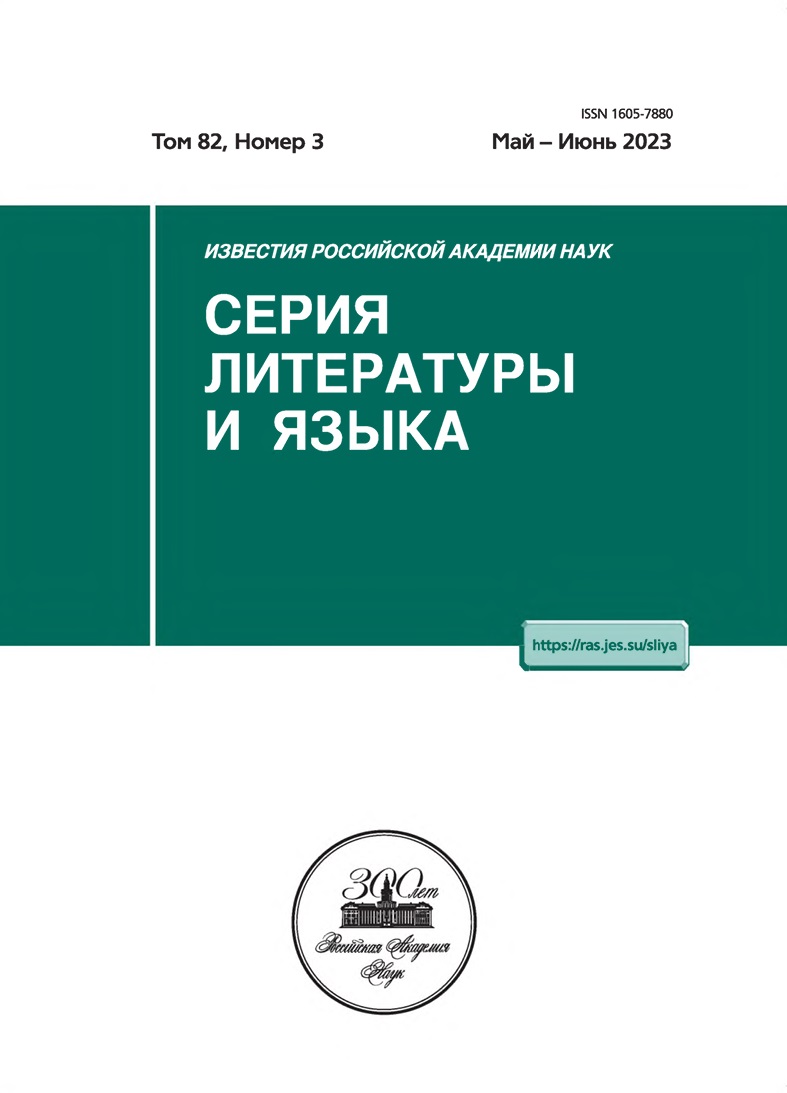Nomination of Family and Kinship in Arkhangelsk Dialects
- Авторлар: Kachinskaya I.B.1
-
Мекемелер:
- Lomonosov Moscow State University
- Шығарылым: Том 82, № 3 (2023)
- Беттер: 77-85
- Бөлім: Articles
- URL: https://rjmseer.com/1605-7880/article/view/656966
- DOI: https://doi.org/10.31857/S160578800026318-5
- ID: 656966
Дәйексөз келтіру
Аннотация
The article deals with the groups of lexemes associated in Arkhangelsk dialects with the concepts of family and kinship. The word-formation nest with the root of rod- (the genus) is much more significant than the nest with the basis of semja- (the family). The same lexemes may mean both specific family members and a group of relatives, in other words, they can be used in a collective meaning. The differentiation turns out to be quite weak. To denote kinship and relatives, the following terms are also used: the names of the people community (bratva, squad, artel, collective farm, population), some pronouns (my, mine, all, ours), metaphors associated with the cultural codes (due to the terminology of S.M. Tolstoy) like a vegetable code (tree, root, seed), animal code (nest), object code (house), somatic code (blood, leg, knee, vein, bone, tail) and the abstract one (side, line). Numerous examples are introduced into the scientific use for the first time.
Негізгі сөздер
Әдебиет тізімі
- Ожегов С.И., Шведова Н.Ю. Толковый словарь русского языка. М., 1993.
- Даль В.И. Толковый словарь живого великорусского языка / Под ред. Бодуэна де Куртенэ. Т. I–IV. М., 1994 (репринтное воспроизведение 1903–1909 гг.).
- Википедия – свободная энциклопедия. URL: http://ru.wikipedia.org/wiki/Семья. [Электронный ресурс] (дата обращения: 10.03.2021) (В настоящее время эта статья в Википедии значительно изменена).
- Трубачев О. Н. История славянских терминов родства и некоторых древнейших терминов общественного строя. М., 1959.
- Куликовский Г. Словарь областного олонецкого наречия. СПб., 1898.
- Ларин Б.А. Из истории слов (лютый зверь, семья, кавардак) // Ларин Б.А. Филологическое наследие. М., 2003. С. 15–24.
- Ляпунов Б.М. Семья, сябр – шабер. Этимологическое исследование // Сб. в честь акад. А.И. Соболевского. Л., 1928.
- Филин Ф.П. О терминах родства и родственных отношений в древнерусском литературном языке // Язык и мышление. Т. ХI. 1948.
- Панкратова Н.П. Об одном из значений слова семья // Вопросы исторической лексикологии и лексикографии восточно-славянских языков. (К 80-летию С.Г. Бархударова). М., 1974. С. 272–277.
- Добровольская Е.В. Концептуализация семьи в русской ЯКМ: Автореф. дис. канд. филол. наук. Томск, 2005. 24 с. URL https://rusneb.ru/catalog/000199_000009_002900316/ (дата обращения: 03.03.23).
- Ухмылина Е.В. Название совокупности родственников в русских народных говорах // Совещание по Общеслав. лингв. атласу. Горький, 23–27 июня 1970. Тезисы докладов. М., 1970. С. 45–51.
- Качинская И.Б. Наименование человеческого сообщества в архангельских говорах: народ, люди, человеки, крещёные... // Лингвистическая экология: проблематика исчезающих языков и культур в истории и современности: Материалы Международной научной конференции, проходившей при поддержке РГНФ (19–22 сентября 2014 года) / под ред. В.М. Грязновой. Ставрополь: Сервисшкола, 2014. С. 147–157.
- Толстая С.М. Категория родства в этнолингвистической перспективе (вместо предисловия) // Категория родства в языке и культуре / Отв. ред. С.М. Толстая. М., 2009. С. 7–22.
- Качинская И.Б. Термины родства и языковая картина мира. М., 2018.
- Доброва Г.Р. Онтогенез персонального дейксиса (личные местоимения и термины родства). СПб.: Изд-во РГПУ, 2003. 492 с.
- Архангельский областной словарь / Под ред. О.Г. Гецовой, Е.А. Нефедовой. 1–23–. М., 1980–2022– (Издание продложается).
- Картотека “Архангельского областного словаряˮ. М., МГУ имени М.В. Ломоносова, филологический факультет, каф. русского языка.
Қосымша файлдар









